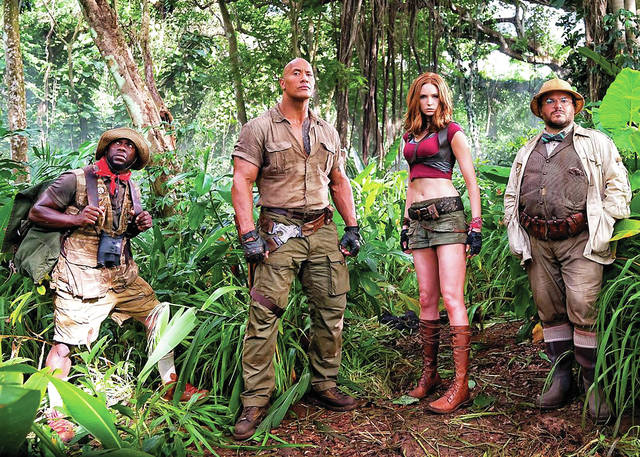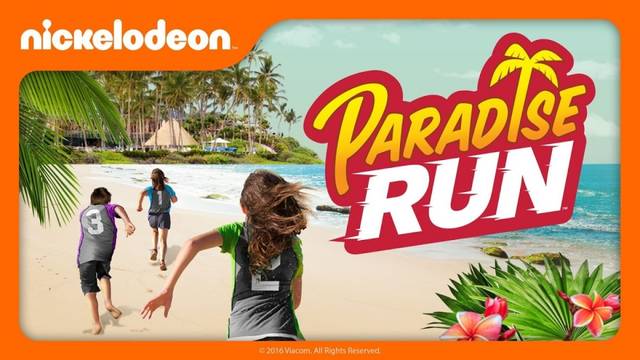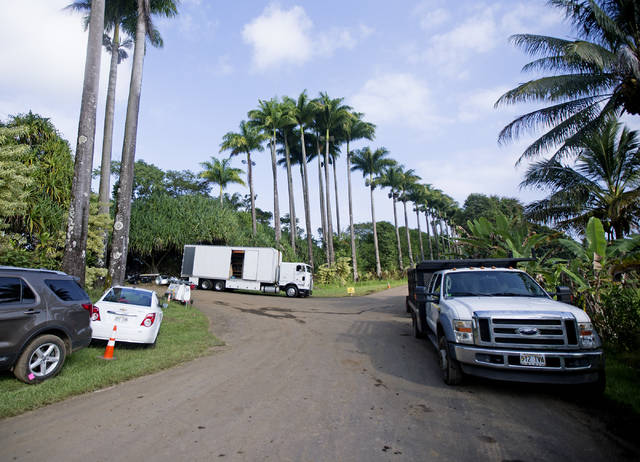Mainland filmmakers spent an average of more than $17 on the Big Island for every Hawaii County resident in the past year. ADVERTISING Mainland filmmakers spent an average of more than $17 on the Big Island for every Hawaii County
Mainland filmmakers spent an average of more than $17 on the Big Island for every Hawaii County resident in the past year.
More than 50 film projects received Hawaii County permits to shoot scenes since July 2016, the county told the Tribune-Herald.
The projects brought familiar faces to the Big Island, including Dwayne “The Rock” Johnson (“Jumanji: Welcome to the Jungle”), Matt Dillon (“Jo, the Medicine Runner”) and Daniella Monet (host of the game show “Paradise Run”).
The projects also brought hundreds of set builders, light workers, sound engineers and other staff. Hundreds of people were hired locally for set building, as extras and for electric and light work.
The fiscal year for estimating economic impact runs from July 2016 to the end of June 2017, according to the Hawaii Island Film Office.
Big Island movies had a combined “economic spend” of $3.5 million in the past 11 months — just for production costs during shoots, said Hawaii County Film Commissioner Justin Finestone.
That doesn’t count big-budget movies shot on private property that required no permits, he said. It also doesn’t include dollars that actors, stage hands, set builders and ancillary staff spent out-of-pocket after hours as tourists. Or the time after production wrapped up, when some stayed for vacations.
The lodging industry also benefits from the film industry’s activity.
“Our $30 million renovation has better poised us to attract and host crews,” said Peggy Sue Harrell, director of sales for the Grand Naniloa Hotel Hilo, a DoubleTree by Hilton.
“Most recently, we hosted the cast and crew from ‘Jumanji,’ including Dwayne ‘The Rock’ Johnson, Kevin Hart and Jack Black. We’ve also hosted the cast and crew from ‘Tiny House Nation’ and ‘The Walking Dead,’” she said.
“Jumanji: Welcome to the Jungle” — a sequel to the 1995 movie — was filmed on private land in East Hawaii in 2016, with filming wrapping up in November. Johnson stars in the movie, along with Hart and Black. Shooting the film had a financial impact of more than $1 million a day for about a month during production, Finestone said.
But that money, because no permit was required, also isn’t included in the “economic spend.”
“Jo, the Medicine Runner,” a movie about a homeless orphan boy of mixed race and a haole doctor, both trying to navigate life in a 1920s Hawaii coffee-farming town, recently completed Big Island filming.
The movie, handled by Honua Studio, created 75 jobs locally and supported 875 others, said Derek Hall, managing director for the Kailua-Kona studio, which is a public-private partnership.
“Jo, the Medicine Runner” injected an estimated $2.2 million, including production costs and after-hours spending by crew members, into the Big Island economy, Hall said.
The Nickelodeon gameshow “Paradise Run” is currently shooting 30 episodes at the Hilton Waikoloa Village in West Hawaii, Finestone said. The show is spending about $50,000 to $60,000 per day for six weeks — which isn’t counted in the overall Hawaii County “economic spend” figure because shooting is taking place at a private business.
Filming on the Big Island goes far beyond feature films.
The industry also includes commercials, documentaries and TV programs.
Commercials often film on private property, Finestone said. But he’s anecdotally aware of one waterproof-electronics cases commercial planned in the months ahead, filming for online Marlboro advertising, and a car company commercial.
Even international TV programming has taken notice of the Big Island.
One of Japan’s top comedians got a permit to sit in a cage at the zoo in a gorilla costume interacting with zoo visitors, Finestone said.
Hall said the Big Island is attractive to movie producers because its multiple climate zones can be used to create a scene mimicking anyplace in the world.
Film companies also get a 20 percent tax break for filming in the state. But that rises to 25 percent if companies film on a Neighbor Island.
Finestone said major projects, which he can not disclose yet, are planned for the coming year.
They include a series to be filmed by a cable network, a feature film for “a major network,” and an animated feature using motion-capture for actors who will train on the Big Island so they’re better able to mimic the way they’d really move during a jungle walk or ocean swim.
“Those are on the horizon,” Finestone said.
Email Jeff Hansel at jhansel@hawaiitribune-herald.com.








